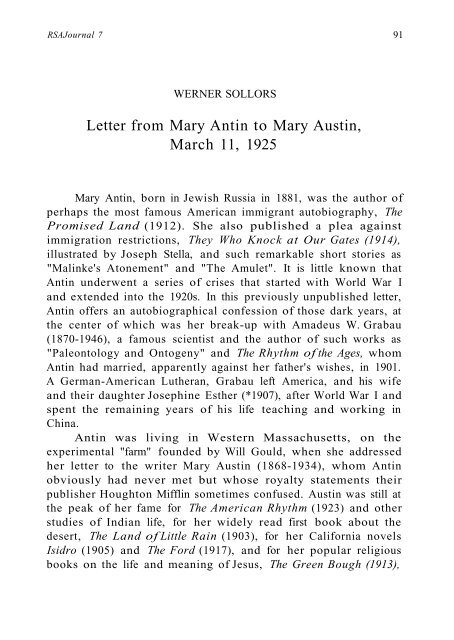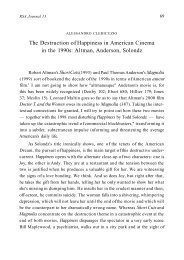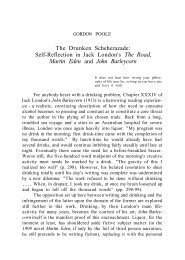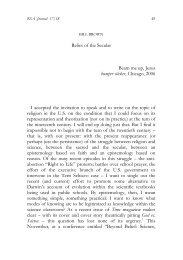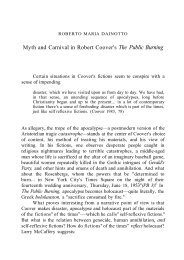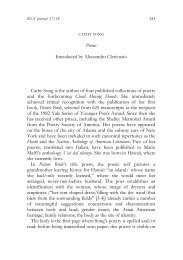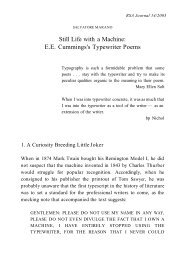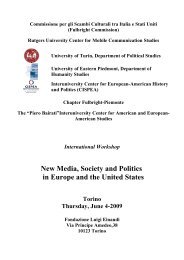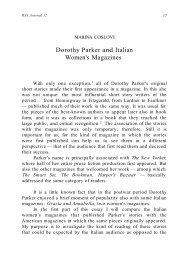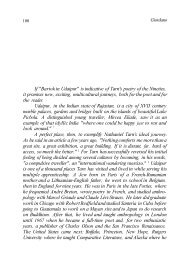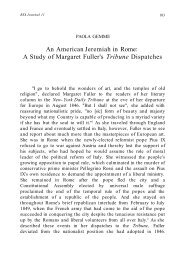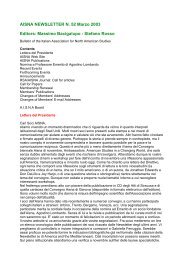Letter from Mary Antin to Mary Austin, March 11, 1925 - aisna
Letter from Mary Antin to Mary Austin, March 11, 1925 - aisna
Letter from Mary Antin to Mary Austin, March 11, 1925 - aisna
Create successful ePaper yourself
Turn your PDF publications into a flip-book with our unique Google optimized e-Paper software.
RSAJournal 791WERNER SOLLORS<strong>Letter</strong> <strong>from</strong> <strong>Mary</strong> <strong>Antin</strong> <strong>to</strong> <strong>Mary</strong> <strong>Austin</strong>,<strong>March</strong> <strong>11</strong>, <strong>1925</strong><strong>Mary</strong> <strong>Antin</strong>, born in Jewish Russia in 1881, was the author ofperhaps the most famous American immigrant au<strong>to</strong>biography, ThePromised Land (1912). She also published a plea againstimmigration restrictions, They Who Knock at Our Gates (1914),illustrated by Joseph Stella, and such remarkable short s<strong>to</strong>ries as"Malinke's A<strong>to</strong>nement" and "The Amulet". It is little known that<strong>Antin</strong> underwent a series of crises that started with World War Iand extended in<strong>to</strong> the 1920s. In this previously unpublished letter,<strong>Antin</strong> offers an au<strong>to</strong>biographical confession of those dark years, atthe center of which was her break-up with Amadeus W. Grabau(1870-1946), a famous scientist and the author of such works as"Paleon<strong>to</strong>logy and On<strong>to</strong>geny" and The Rhythm of the Ages, whom<strong>Antin</strong> had married, apparently against her father's wishes, in 1901.A German-American Lutheran, Grabau left America, and his wifeand their daughter Josephine Esther (*1907), after World War I andspent the remaining years of his life teaching and working inChina.<strong>Antin</strong> was living in Western Massachusetts, on theexperimental "farm" founded by Will Gould, when she addressedher letter <strong>to</strong> the writer <strong>Mary</strong> <strong>Austin</strong> (1868-1934), whom <strong>Antin</strong>obviously had never met but whose royalty statements theirpublisher Hough<strong>to</strong>n Mifflin sometimes confused. <strong>Austin</strong> was still atthe peak of her fame for The American Rhythm (1923) and otherstudies of Indian life, for her widely read first book about thedesert, The Land of Little Rain (1903), for her California novelsIsidro (1905) and The Ford (1917), and for her popular religiousbooks on the life and meaning of Jesus, The Green Bough (1913),
92 RSA Journal 7The Man Jesus (1915), and A Small Town Man (<strong>1925</strong>). <strong>Austin</strong>, whohad been ill when <strong>Antin</strong>'s letter reached her, seems <strong>to</strong> haveanswered <strong>Antin</strong> and invited her <strong>to</strong> come West, and <strong>Antin</strong> wrote heragain two years later. Yet <strong>Mary</strong> <strong>Antin</strong> was <strong>to</strong> publish only twomore short pieces in the twenty-four years before her death in1949.The original of the letter is deposited in the <strong>Mary</strong> <strong>Austin</strong>Papers at the Henry E. Hunting<strong>to</strong>n Library. It is published here forthe first time with the permission of the Hunting<strong>to</strong>n Library and ofAnne Ross.


